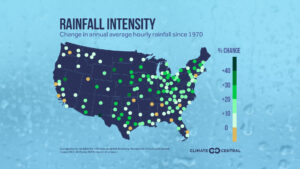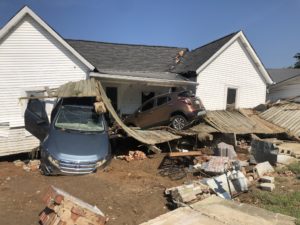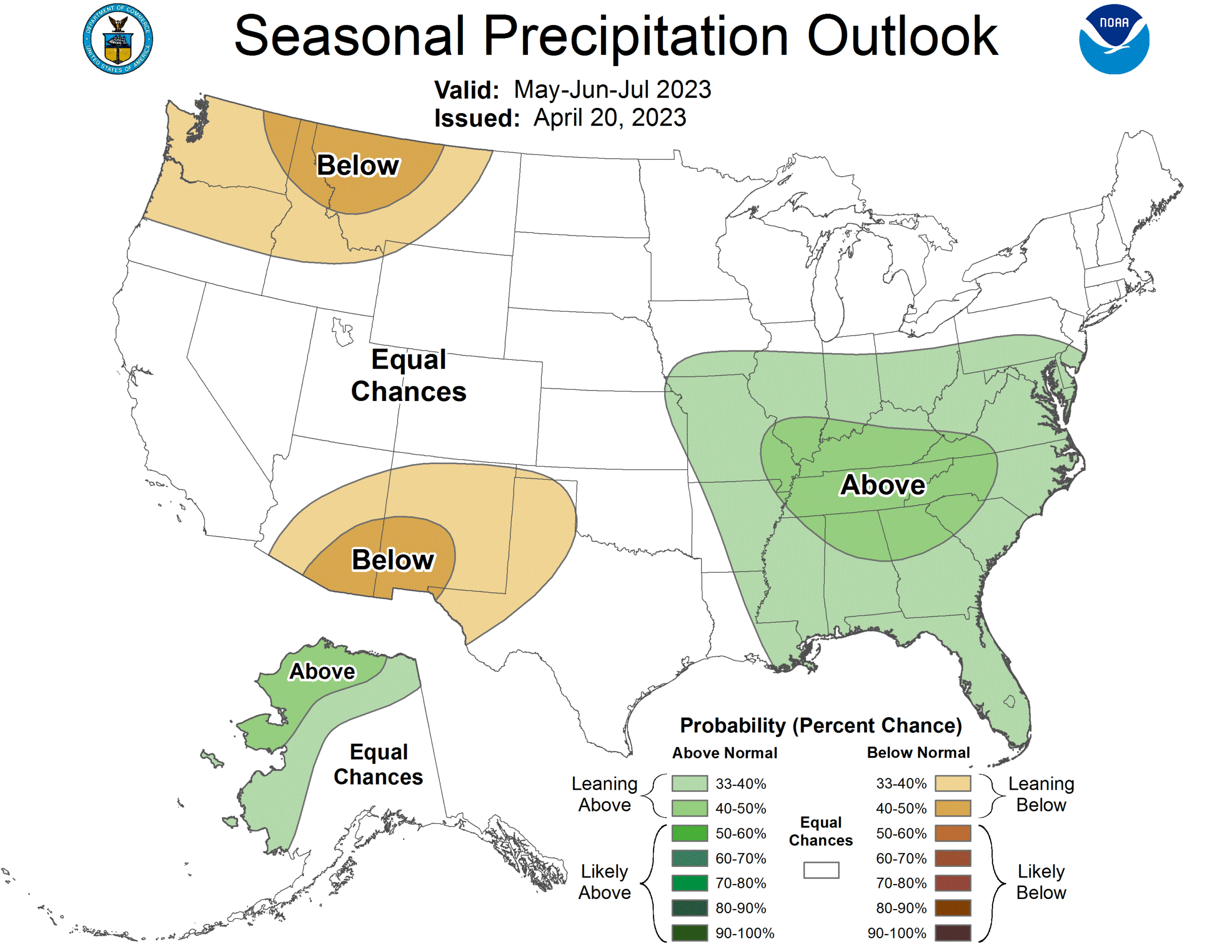
Rainstorms are getting wetter.
Since 1970, the average hour with rainfall in Nashville has gotten 12.5% wetter, according to new data from Climate Central, mirroring the national average.
 Climate change is causing precipitation to increase for two main reasons: The atmosphere is getting warmer, so it can physically hold more water, and atmospheric circulation patterns are changing.
Climate change is causing precipitation to increase for two main reasons: The atmosphere is getting warmer, so it can physically hold more water, and atmospheric circulation patterns are changing.
From a basic perspective, more rain can mean more flooding.
But the science of how climate change affects flooding is a little more complex.
“The direction of the storm, even the velocity … plays a significant role in flooding,” said Gabriel Perez Mesa, a researcher at Oak Ridge National Laboratory’s Climate Change Science Institute.
His research in Iowa showed that turning strom trajectories five degrees clockwise could increase flooding by up to 20%, depending on the watershed size. Perez Mesa is now investigating whether these findings can be considered more broadly across the US under a changing climate.
To make better climate models for precipitation and flooding in Tennessee, Perez Mesa said, the state needs mesonet — or highly localized, continuous — data.
 Caroline Eggers WPLN News
Caroline Eggers WPLN NewsTwo cars swept away by floodwaters collided with a house during the deadly storm in Waverly on Aug. 20, 2021.
More: Tornadoes, landslides and floods are easier to forecast with ‘mesonets.’ Tennessee may get one soon.
Tennessee holds the record for the heaviest 24-hour precipitation in a non-coastal state. In August 2021, powerful storms dropped 20.73 inches of rain in the town of McEwen, contributing to catastrophic flooding in Waverly. Since the area did not have a mesonet station, forecasters and climatologists relied on a rain gauge operated by the McEwen Wastewater Treatment Plant to determine the total rainfall.
Flooding is the most common weather disaster nationally, and it can cause secondary disasters like landslides in Tennessee.
One inch of water in a home can cause $25,000 in damage, according to the Federal Emergency Management Agency.
Communities in flood zones near creeks or rivers are a greater risk from heavy rains, but floods can cause significant damage to other areas. Between 2014 and 2018, more than 40% of flood claims to FEMA came from properties outside high-risk flood zones.
For the next three months, Tennessee has a greater probability of heavier rainfall, according to the National Oceanic and Atmospheric Administration.


